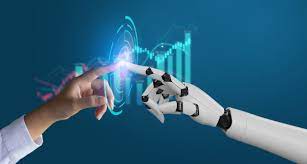The Power of Technology: How to Harness Its Potential

Technology has become an integral part of our lives, revolutionizing the way we work, communicate, and live. From smartphones to artificial intelligence, technology has the power to transform industries and improve our daily lives. However, harnessing the full potential of technology requires a strategic approach. In this article, we will explore the various ways in which technology can be harnessed effectively and how it can shape our future.
Enhancing Efficiency and Productivity
One of the key advantages of technology is its ability to enhance efficiency and productivity. Automation, for instance, has revolutionized industries by streamlining processes and reducing human error. Tasks that once required hours of manual labor can now be completed in a fraction of the time with the help of machines and software.
In the manufacturing sector, for example, robots have taken over repetitive and physically demanding tasks, allowing human workers to focus on more complex and creative aspects of their jobs. This not only increases productivity but also improves job satisfaction and reduces the risk of workplace injuries.
Furthermore, technology has made communication faster and more efficient. With the advent of email, instant messaging, and video conferencing, businesses can now connect with clients and colleagues from around the world in real-time. This has not only reduced the need for travel but has also enabled remote work opportunities, leading to a more flexible and diverse workforce.
Transforming Education
Technology has also transformed the field of education, making learning more accessible and engaging. Online platforms and educational apps have revolutionized traditional classroom settings by providing students with interactive learning experiences.
With the help of technology, students can access a wealth of information at their fingertips. Online libraries, e-books, and educational websites provide a vast array of resources that cater to different learning styles and abilities. This allows students to learn at their own pace and explore subjects beyond what is covered in the classroom.
Furthermore, technology has made education more inclusive. Students with disabilities can now access specialized tools and software that cater to their unique needs. For example, text-to-speech software enables visually impaired students to access written content, while speech recognition software allows students with motor disabilities to interact with computers.
Improving Healthcare
Technology has revolutionized the healthcare industry, improving patient care and outcomes. Electronic health records (EHRs) have replaced traditional paper-based systems, making it easier for healthcare providers to access and share patient information. This not only reduces the risk of errors but also improves coordination and collaboration among healthcare professionals.
Moreover, technology has enabled telemedicine, allowing patients to consult with healthcare providers remotely. This is particularly beneficial for individuals in rural or underserved areas who may have limited access to healthcare facilities. Telemedicine also reduces the need for unnecessary hospital visits, saving time and resources for both patients and healthcare providers.
In addition, technology has played a crucial role in medical research and development. Advanced imaging techniques, such as MRI and CT scans, have revolutionized diagnostics, enabling early detection of diseases and more accurate treatment plans. Furthermore, the use of artificial intelligence in healthcare has the potential to analyze vast amounts of medical data and identify patterns that can lead to better diagnosis and personalized treatment options.
Addressing Environmental Challenges
Technology has the potential to address some of the pressing environmental challenges we face today. Renewable energy technologies, such as solar panels and wind turbines, have gained momentum in recent years, offering sustainable alternatives to fossil fuels. These technologies not only reduce greenhouse gas emissions but also provide opportunities for economic growth and job creation.
Furthermore, technology can help monitor and manage natural resources more efficiently. Smart grids, for example, enable better management of electricity distribution, reducing wastage and improving overall energy efficiency. Similarly, sensor-based irrigation systems can optimize water usage in agriculture, reducing water waste and conserving this precious resource.
In conclusion, technology has the power to transform industries, enhance productivity, and improve our daily lives. By harnessing its potential effectively, we can create a future that is more efficient, inclusive, and sustainable. From enhancing efficiency and productivity to transforming education and healthcare, technology offers endless possibilities. However, it is important to approach technology with a strategic mindset, ensuring that it is used responsibly and ethically. By embracing technology and leveraging its power, we can shape a better tomorrow for generations to come.
